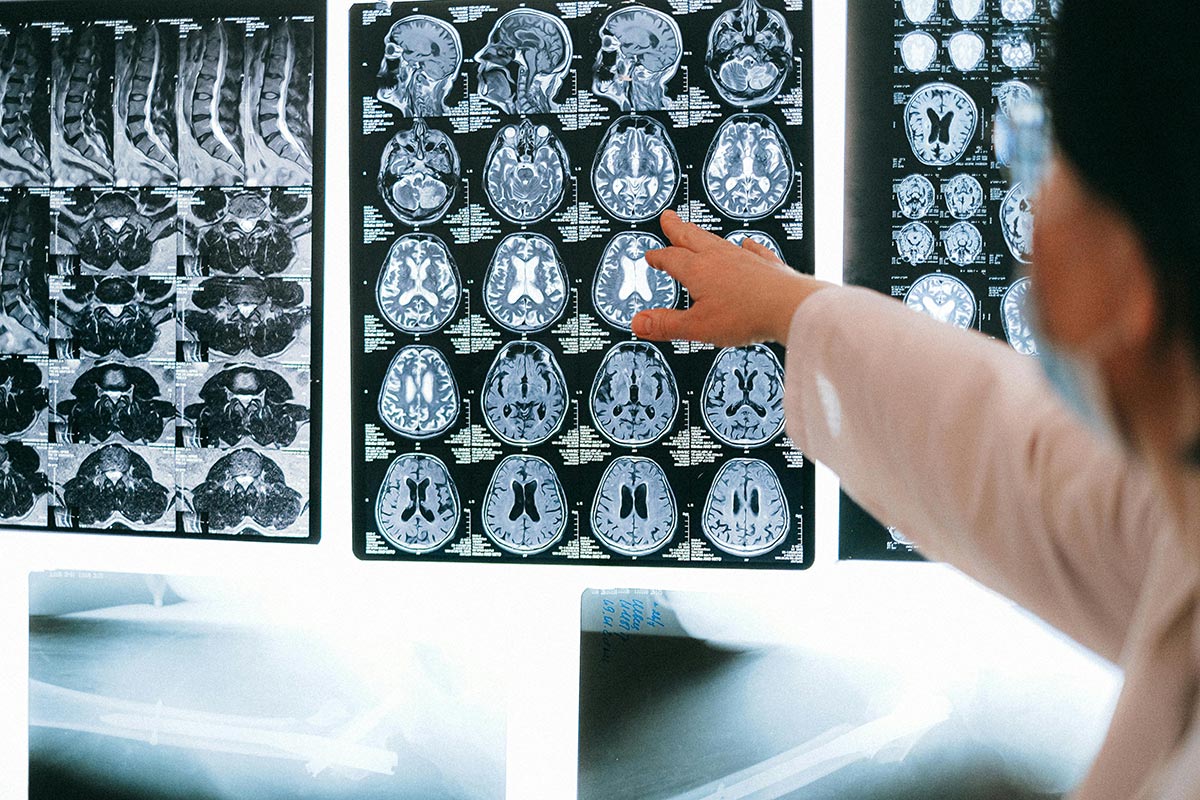
Introduction to Dopamine Addiction and Its Challenges
In our hyperconnected world, the allure of a dopamine surge is only a swipe or click away. While dopamine is essential in driving our motivation and happiness, its excessive release due to overstimulation can lead to significant challenges, including addiction. By exploring effective strategies, debunking myths, and understanding the psychological aspects, we can work toward breaking the cycle of dopamine dependence and fostering better mental well-being.
Understanding Dopamine Addiction and Its Impact

What is dopamine addiction and how does it affect mental health?
Dopamine addiction refers to the compulsive pursuit of activities that increase dopamine release, contributing to disruptive patterns of behavior and potentially affecting mental health. This addiction typically involves the excessive engagement in behaviors or substances that stimulate dopamine release, leading to emotional instability, anxiety, depression, and other mental health concerns.
Dopamine itself is a neurotransmitter that plays a critical role in motivation, pleasure, and the brain's reward pathways, making it a vital element in our emotional experiences. When individuals engage in pleasurable activities, such as social media use or substance abuse, dopamine is released, reinforcing those behaviors and leading to repeated engagement.
However, this cycle can lead to a state of dopamine deficiency—a condition that occurs after the brain has become desensitized to dopamine stimuli due to constant overstimulation. Symptoms of dopamine deficiency include irritability, lack of motivation, and social withdrawal, which can further exacerbate mental health issues.
The constant need for higher levels of stimulation can make it difficult for individuals to find joy in simpler, more fulfilling activities, ultimately impacting overall well-being. Addressing this addiction requires implementing strategies like mindfulness and engaging in healthier habits, which can help restore balance in dopamine levels.
Effects of dopamine addiction
| Impact | Description | Potential Solutions |
|---|---|---|
| Emotional instability | Dependence on high dopamine activities can result in anxiety and mood swings. | Mindfulness practices and therapy. |
| Motivation deficits | Users may find it challenging to engage in daily life without external dopamine stimulation. | Setting boundaries and engaging in hobbies. |
| Interpersonal isolation | As addictive behaviors take precedence, meaningful social interactions can decline. | Strengthening social support systems. |
Strategies for Overcoming Dopamine-Related Behaviors

What are effective strategies to manage and overcome dopamine-related addictive behaviors?
To effectively manage and overcome dopamine-related addictive behaviors, implementing clear boundaries is paramount. This means determining limits on engaging with activities that excessively trigger dopamine release, such as social media, video gaming, and other digital distractions.
Setting Boundaries for Dopamine Triggers
A structured approach might include:
- Time Limits: Designate specific times of the day for using devices or indulging in certain activities.
- Digital Detox Periods: Allow for regular breaks from technology, such as a full day without screens.
- Physical Self-binding: Remove addictive substances from your environment to reduce temptation.
Mindfulness Practices
Mindfulness practices serve as powerful tools to enhance self-awareness and cultivate a healthier relationship with pleasurable activities. Consider integrating the following:
- Meditation: Foster a calm mindset that reduces impulsivity.
- Deep-Breathing Exercises: Help manage stress and refocus concentration.
- Moderate Engagement: Seek 'Goldilocks' activities that stimulate without overwhelming dopamine levels, such as reading or engaging in creative pursuits.
Professional Support
While self-directed strategies are beneficial, professional support can provide essential guidance.
- Therapy: Cognitive Behavioral Therapy (CBT) can equip individuals with effective coping mechanisms.
- Support Groups: Interact with others facing similar challenges to foster accountability and shared learning.
Combining these strategies benefits the brain and overall well-being, helping to break the cycle of dopamine addiction through healthy lifestyle changes.
The Reality of Dopamine Detox Methods and Alternatives

How effective are dopamine detox methods and what are some alternatives?
Dopamine detox methods aim to temporarily abstain from pleasurable activities to reset the brain's reward system. However, their effectiveness varies widely among individuals. Some report significant improvements in their ability to enjoy simpler pleasures and break unhealthy habits, while others do not experience profound benefits.
Alternatives to detox
Instead of an abrupt dopamine fast, individuals can consider gradual exposure reduction to stimulating activities. Here are several alternatives:
- Limit Screen Time: Set specific times for device usage to avoid overexposure.
- Mindfulness Practices: Meditate or engage in deep-breathing exercises to help center your focus away from instant gratification.
- Engage in Nature: Spending time outdoors has therapeutic effects and reduces dependence on dopamine-triggering behaviors.
Natural approaches to dopamine regulation
Maintaining balanced dopamine levels can also be achieved through lifestyle choices. Here are three strategies:
- Regular Exercise: Incorporating physical activity is essential, as it helps normalize dopamine signaling and improves overall mood.
- Nutrition: Consuming foods rich in tyrosine, such as nuts, seeds, dairy, and lean meats, can support natural dopamine production.
- Sleep Hygiene: Improving sleep quality significantly impacts brain health and, in turn, dopamine levels.
In conclusion, while dopamine detox methods can work for some, exploring alternative approaches and holistic lifestyle changes may offer more sustainable solutions for managing dopamine-related challenges.
Incorporating Exercise and Lifestyle Changes

What role do exercise and lifestyle changes play in managing dopamine levels?
Exercise and lifestyle changes are essential for maintaining healthy dopamine levels, which in turn supports mental well-being and prevents the dependency on addictive behaviors. Regular physical activity has been shown to increase dopamine production in the brain, helping to elevate mood and alleviate stress.
Engaging in aerobic exercises, such as running or cycling, has specific benefits for dopamine regulation. Studies suggest that these activities can normalize the signaling pathways affected by substance use, assisting in better reward processing and motivation. Not only does exercise stimulate dopamine release, but it also supports neuroplasticity, allowing for healthier habits to develop over time.
In addition to regular exercise, incorporating mindfulness practices—such as meditation and yoga—can significantly contribute to dopamine balance. These practices promote inner peace and clarity, further enhancing emotional stability. Likewise, a balanced diet rich in nutrients supports neurotransmitter health, while prioritizing quality sleep ensures optimal functioning of dopamine receptors. Poor sleep can lead to deficits in dopamine signaling, making individuals more susceptible to addictive behaviors.
Lifestyle modifications for balance
Simple lifestyle changes can make a big difference. For instance, limiting screen time and engaging in hobbies that foster genuine emotional connections can support healthier dopamine responses. Aim for activities that provide moderate joy without oversaturation of dopamine, termed "Goldilocks activities", to maintain a balanced approach to pleasure and motivation.
In summary, a combination of consistent exercise, mindful practices, proper nutrition, and adequate sleep helps stabilize dopamine levels and enrich one's mental state, effectively reducing the risk of addiction.
Debunking Myths About Dopamine Addiction
What are some myths and facts about dopamine addiction and its influence on behavior?
Dopamine addiction is often misunderstood. A prevalent myth is that dopamine itself is addictive. In reality, it's the activities or substances stimulating dopamine pathways that lead to compulsive behaviors.
Dopamine is crucial for motivation and learning. Activities that raise dopamine levels are not inherently harmful. It's the excessive and compulsive engagement in such activities, like social media or gambling, that can contribute to addiction.
Another misconception is that addiction is solely a result of willpower failure. In truth, addiction is a complex brain disorder influenced by genetics, environmental factors, and individual behavior. Symptoms of dopamine addiction typically include persistent engagement in high-risk behaviors, even in the face of negative consequences.
The Role of Rehabilitation
Effective treatment for dopamine-related issues often involves strategies beyond mere abstinence. Rehabilitation programs, which integrate therapy and support systems, can help individuals break the cycle of addiction by addressing the underlying psychological and social factors.
Understanding the truths about dopamine's role helps us realize that while dopamine is linked to pleasure, the key issue lies in how our engagement with various stimuli is managed. By recognizing these truths, we can create healthier relationships with rewarding activities.
Digital Media's Role in Dopamine and Addiction Patterns
How does digital media usage affect dopamine and addiction patterns?
Digital media usage can significantly affect dopamine release, often leading to addictive behaviors. Engaging with platforms like social media and gaming can trigger substantial dopamine surges in the brain's reward pathways. These activities include frequent, unpredictable rewards that reinforce the desire to engage repeatedly, akin to mechanisms observed in substance addiction.
As users interact with digital content, they receive instant gratification through likes, notifications, and achievements. This cycle of feedback encourages compulsive usage, with users feeling an ongoing need for these quick rewards. Such consistent exposure can create a chronic state of dependency characterized by uncontrollable urges, neglect of responsibilities, and deterioration of real-world relationships.
The consequences of excessive digital media consumption include symptoms commonly associated with addiction: irritability, anxiety, and diminished overall well-being. Addressing these patterns requires comprehensive strategies.
Effective strategies may include:
- Cognitive Behavioral Therapy (CBT): Helps individuals recognize and alter harmful thought patterns related to their media usage.
- Support Groups: Provides social support and shared experiences for recovery.
- Digital Detoxes: Structured breaks from screens to reset habits and regain balance in life.
- Setting Boundaries: Implementing limits on usage to regain control.
Combining these approaches can help mitigate the societal consequences of digital media addiction, promoting healthier engagement and enhancing quality of life.
Exploring Psychological and Emotional Aspects
What psychological and emotional factors contribute to dopamine addiction?
Psychological and emotional factors significantly influence the onset and maintenance of dopamine addiction. Many individuals seek dopamine-releasing activities as a way to cope with stress, loneliness, or emotional distress. This reliance on engaging in behaviors such as excessive social media use, gambling, or substance abuse often provides temporary relief from negative feelings, reinforcing the cycle of addiction.
The emotional compensation derived from these dopamine-inducing activities can be powerful. However, this leads to a pattern where the individual increasingly depends on these habits for emotional regulation. Such dependencies can create challenges in developing healthier coping mechanisms, as they offer only fleeting satisfaction.
Recognizing these psychological triggers is essential in addressing dopamine addiction. Strategies that promote mindfulness, emotional regulation, and resilience can be particularly effective. For instance, individuals can engage in practices like meditation or journaling, which may foster greater self-awareness and help break the cycle of dependence on immediate dopamine hits.
Emotional impact and coping mechanisms
The emotional toll of dopamine addiction is profound, often manifesting as anxiety, depression, and social withdrawal. As dopamine pathways become overstimulated by persistent engagement in certain behaviors, the brain can start to require more stimulus to achieve the same pleasurable feelings. This increased tolerance leads to a detrimental cycle, where deeper emotional distress can ensue when individuals try to reduce their engagement.
Effective coping mechanisms involve not just avoidance of dopamine-triggering activities but also cultivating healthier habits. Incorporating regular physical exercise, building social connections, and adopting a balanced lifestyle can mitigate the negative emotional impacts of dopamine addiction. These strategies not only promote emotional wellness but also help individuals reclaim control over their lives by fostering a sense of fulfillment and connection with reality.
Understanding Biological Mechanisms Behind Dopamine Addiction

What are the biological underpinnings of dopamine addiction?
Dopamine addiction revolves around specific adaptations in the brain's reward pathways. This neurotransmitter is crucial for signaling pleasure and reinforcing behaviors that lead to enjoyable experiences. In healthy amounts, dopamine motivates individuals to seek out essential needs such as food, safety, and social interactions.
Chronic exposure to activities or substances that overstimulate dopamine release can trigger significant changes within the brain. Notably, the brain may become less sensitive to dopamine over time. This phenomenon manifests as a need for more substantial stimuli or activities to achieve the same levels of pleasure, a state referred to as tolerance.
Diminished sensitivity of dopamine receptors results from excessive activation due to addictive behaviors, causing individuals to engage compulsively despite negative consequences. The alterations in brain structure further complicate the challenge of overcoming addiction, as they impair decision-making and increase dependency on the addictive stimuli.
The Consequences of Altered Dopamine Pathways
Individuals struggling with dopamine addiction often find themselves in a vicious cycle, where an increase in substance use leads to a decrease in natural motivation and pleasure derived from everyday life. The brain's adjustment to these sustained high dopamine levels underscores the complex nature of addiction, linking it to both biological and environmental factors.
Research also indicates that genetics plays a notable role, with certain individuals having a predisposition to addiction based on their genetic makeup. Together, these factors highlight the multifaceted dynamics of dopamine addiction and the necessity for comprehensive treatment approaches that address both the biological and behavioral aspects of recovery.
| Factors | Implications | Possible Effects |
|---|---|---|
| Chronic Stimulation | Reduced receptor sensitivity | Increased tolerance and compulsive behavior |
| Brain Structure Changes | Impaired decision-making and memory | Difficulty in ceasing addictive behaviors |
| Genetic Predisposition | Heightened susceptibility to addiction | Increased risk of substance use disorders |
Practical Tips for Reducing Screen Time and Building Healthier Habits
How can individuals reduce screen time effectively?
Reducing screen time effectively involves implementing practical strategies designed to establish healthier habits. Here are some actionable tips:
- Set Defined Limits: Design specific daily limits on digital consumption. Use built-in smartphone features or apps that track and regulate your usage.
- Create Screen-Free Zones: Establish areas in your home where screens are not allowed — during meals, bedrooms, or family gatherings can significantly reduce unnecessary screen time.
- Intentional Unplugging: Engage in offline activities that nurture your mental and emotional well-being. Consider nature walks, reading, or picking up new hobbies, steering clear of digital distractions.
Building a balanced digital life
Fostering a balanced digital lifestyle goes beyond just cutting down screen time. Here are additional strategies to support this balance:
- Mindfulness Practices: Incorporate mindfulness meditation into your daily routine. This promotes awareness of your screen habits and helps develop a more intentional approach to technology use.
- Social Support: Involve friends and family in your journey towards healthier habits. Sharing goals can increase accountability and make the process more enjoyable.
- Engage in Meaningful Activities: Search for activities that provide fulfillment without overstimulating dopamine pathways. Seek hobbies or interests that cultivate deeper connections without reliance on screens.
By integrating these strategies, individuals can effectively reduce screen dependency, fostering improved mental health and overall well-being.
Charting a Path Towards Optimal Mental Health
Understanding dopamine addiction and effectively managing it requires a nuanced approach that balances lifestyle changes, psychological insights, and societal awareness. Through strategic interventions such as digital moderation, physical activity, mindfulness practices, and community support, individuals can take control of their dopamine-driven choices, paving the way for healthier and more fulfilling lives. By committing to these changes, we move closer to achieving mental clarity, emotional stability, and overall well-being without the constraints of addiction.
References
- Can the 'Dopamine Detox' Trend Break a Digital Addiction?
- Too much pleasure can lead to addiction. How to break the cycle ...
- Dopamine addiction: definition, role, and dopamine-seeking behavior
- How To Overcome Dopamine Addiction - BetterHelp
- Constant craving: how digital media turned us all into dopamine ...
- Dopamine detox: How does it work? - MedicalNewsToday
- 4 tips to outsmart dopamine if your kid is hooked on screens or sweets
- What Is a 'Dopamine Detox'? - Health
.svg)





